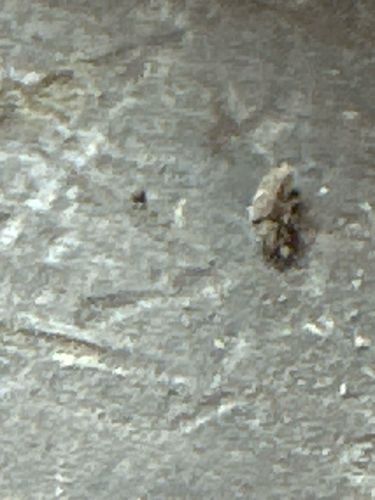Masked Hunter Nymph
Scientific Name: Reduvius personatus
Order & Family: Hemiptera, Reduviidae
Size: Nymphs typically range from 5-10 mm; adults can reach up to 17-20 mm.

Natural Habitat
Often found indoors, especially in dusty areas; also outdoors under rocks, logs, and decaying wood. They prefer dry environments.
Diet & Feeding
Predatory; nymphs cover themselves with dust, lint, and debris to camouflage themselves and ambush other small insects like bed bugs, carpet beetle larvae, and other arthropods. Adults also prey on various insects.
Behavior Patterns
The most distinctive behavior of the nymph is its habit of camouflaging itself with debris, helping it to hide from predators and sneak up on prey. They are nocturnal hunters and are generally shy, avoiding human contact. The development from nymph to adult involves several molts.
Risks & Benefits
Generally considered beneficial due to their predatory nature, especially their ability to prey on common household pests like bed bugs. However, if handled, they can deliver a painful bite, similar to a bee sting, though they are not aggressive towards humans unless provoked. They do not transmit diseases.
Identified on: 9/8/2025